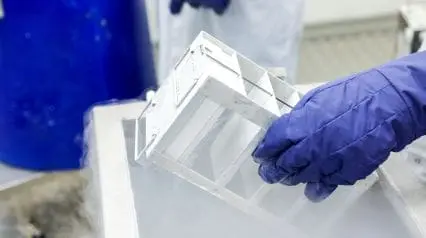What is Pharmaceutical Cold Chain Management?
Pharmaceutical cold chain management is a complex process that involves various tasks aimed at controlling the temperature and related environmental conditions of medications and other pharmacological products through the entire supply chain, from manufacturing and storage to transportation and distribution. Aside from strategizing processes, manufacturers, distributors, and healthcare providers would benefit from technological innovations to preserve the quality and integrity of these products and, consequently, ensure the safety of the consumers in need.
Importance
Most pharmaceuticals are temperature-sensitive. Insulin and vaccines lose effectiveness in extreme cold, while antibiotics like Benzylpenicillin and Flucloxacillin degrade when warmed for too long. Worse than the lowered potency, certain medications, chemicals, and biological products (e.g., blood and tissue) may be harmful when exposed to unsuitable environments.
Because of the grave consequences resulting from refrigeration errors, delivery delays, or any other disruptions, government and industry leaders set strict regulations for companies to follow. Constant monitoring, prompt issue resolution, and complete documentation are all required of companies involved in the cold supply chain. Any form of oversight will be dealt with harshly.
Consistency and reliability are sure-fire ways to gain consumer trust. Adopting the best practices in every aspect of the cold chain operation and following the trends in the industry ensure this. Ultimately, these actions enhance the company’s reputation and give them a competitive edge over other businesses.
Key Players
Knowing the internal and external stakeholders in the pharmaceutical supply chain helps companies understand their role and what they need to do to protect a particular product’s integrity at every step of the process.
- Manufacturers – The pharmaceutical cold chain journey starts at manufacturing facilities, where they research, formulate, package, and properly store products before mass distribution. Unresolved mistakes and compromises made at this stage will imperil the whole supply chain.
- Distributors – The next phase in the cold chain management of pharmaceutical products is distribution. Wholesalers and logistics providers are responsible for adhering to the strict temperature guidelines by constantly monitoring the environmental conditions of their warehouses for storage and reefers or refrigerated trucks for transportation.
- Healthcare Providers – Medical professionals (e.g., doctors, nurses, pharmacists) are at the receiving end of the cold chain management pharmaceuticals, so they should also be capable of keeping pharmaceutical products and other biologics in safe and temperature-controlled storage spaces or equipment before administering them to their patients or other end users.
Challenges
Companies that operate within the cold chain management in the pharmaceutical industry face complex challenges. Organizations must meet these possible predicaments head-on because the health and safety of consumers are at stake.
- Intricacies of global distribution – Numerous pharmaceutical companies distribute their goods globally. Ensuring consistent temperature while the product transits through varying environmental conditions and infrastructural differences is a tremendous responsibility.
- Constantly evolving regulations – Cold chain management pharmacy and medical mandates are strict. These also come with severe penalties. But the most formidable part of this is that these regulations change often. Companies should find ways to apprise themselves of these amendments and distinct laws set in other countries.
- Keeping up with technology – The most critical aspect in this sector is temperature control. Companies should not hesitate to invest in sensors for monitoring, software solutions for task automation, or blockchain technology for traceability. These may be expensive, but they streamline operations satisfactorily.
Best Practices in Pharmaceutical Cold Chain Management
Because protecting the public is the main goal of the pharmaceutical industry, companies should be able to demonstrate their commitment to people’s health, safety, and overall well-being. Accomplishing this feat is challenging. However, this is achievable through these sensible strategies:
Monitor and Analyze Data in Real-Time
The most crucial task in the entire cold chain is monitoring the temperature of the entire system from end to end, ensuring that it is within the proper range. Any aberrations must be reported and assessed on the spot. Here are some recommendations for better monitoring:
- Install sensors that detect minute environmental changes and alert users so they can take immediate action.
- Integrate robust analytics that helps managers review and evaluate historical data for proactive planning and decision-making.
- Carefully prepare contingency plans, with SOPs for communication and detailed procedures, to handle unanticipated temperature excursions.
Explore SafetyCulture Monitoring Solution
Utilize advanced sensor technology to monitor assets, automate vital alerts, implement actions, and report urgent issues.
Talk to an expertConduct Routine Risk Assessments
After real-time monitoring, this is one of the most dependable processes that safeguard any company’s bottom line. Risk assessments enable businesses to identify potential hazards and vulnerable points in the cold chain that could compromise the safety and quality of the products. Listed below are a few tips on how to conduct this:
- Rigorously follow the steps to formulate the right mitigation strategies.
- Perform this bi-annually or, at the very least, once a year. Schedule the assessment ahead of time, not just to prepare everyone involved but also to minimize disruptions in the operations.
- Carry out periodic reviews to ensure the effectiveness of the adopted strategies.
Create Your Own Risk Assessment Checklist
Eliminate manual tasks and streamline your operations.
Get started for FREEEquip Workers with Training
Everyone involved in cold chain management (pharmaceuticals, biologics, etc.) should know the significance of their job and its impact on their end users. This can be accomplished through regular refresher training, continuous learning, and evaluating them to guarantee adequate learning.
- Implement and schedule comprehensive training programs that cover temperature control and the effect of excursions on quality.
- Tailor the programs based on the personnel’s role.
- Provide brief learning modules, particularly with regulatory updates or any new information about the industry, that can be studied in just a few minutes and viewed using their mobile devices.
Build Partnerships and Ensure Collaboration
It is quite rare to find a company that covers the entire cold chain management. More often than not, tasks are divided among different stakeholders (e.g., manufacturers, wholesalers, logistics providers, healthcare facilities). When various key players are working towards one goal, collaboration is a must. Here are some of the best practices to ensure a good working partnership.
- Readily share crucial information with partners, such as ETAs (estimated time of arrival), incident reports, and contingency plans in case of emergencies.
- Regularly audit and assess the practices of other stakeholders.
- Ensure transparency among the members of the team by using a secure central dashboard that stakeholders can access and communicate in.




